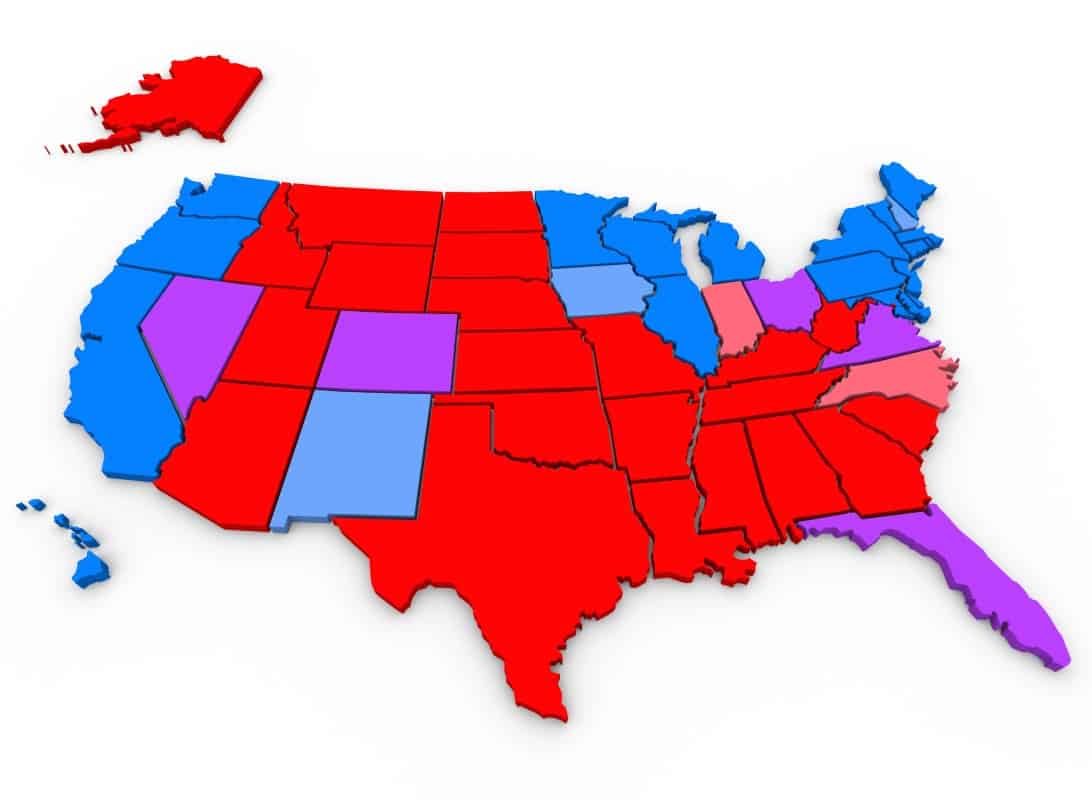Discover Why Buying a Home in Major Cities is Becoming an Impossible Dream and Uncover the Top 5 Most and Least Affordable Cities

Anyone who has observed the housing market over the last four years can attest to the growing difficulty of buying a home, especially in the United States. A new report categorizes some major cities around the world as “impossibly unaffordable,” reflecting the sentiments of many prospective home buyers.
The Most Unaffordable Cities Worldwide

On the US front, cities on the West Coast and in Hawaii dominate the list of the top 10 most unaffordable places, according to the annual Demographic International Housing Affordability report, which has been monitoring house prices for two decades.
Unsurprisingly, California cities such as San Jose, Los Angeles, San Francisco, and San Diego rank among the priciest in the country. Honolulu, Hawaii’s capital, also earns a spot, coming in sixth out of 94 major markets across eight countries.
Australia joins the US in topping the “impossibly unaffordable” list, with Sydney leading the way, followed by Melbourne and Adelaide.
#1 Hong Kong: The World’s Most Expensive Housing Market

Topping the global list, Hong Kong is notorious for its tiny condos and sky-high rents. The city has the lowest home ownership rate among the cities surveyed, with only 51% of residents owning homes, largely due to exorbitant property prices driven by limited land availability and high demand.
#2 Sydney: Australia’s Housing Nightmare

Sydney, Australia’s largest city, ranks second globally in unaffordability. With a price-to-income ratio of 13.3, Sydney’s housing market is heavily impacted by high land values and urban containment policies, which have restricted the availability of new housing and driven prices up.
#3 Vancouver: The Canadian Dream Deferred

Vancouver is the third most unaffordable city, with a median multiple of 12.3. The city’s desirable location and limited land for expansion have led to a significant increase in property prices, making homeownership unattainable for many middle-income households.
#4 San Jose: The Tech Hub with Sky-High Prices

In the United States, San Jose is the least affordable city, with a median multiple of 11.9. The heart of Silicon Valley, San Jose’s housing market is driven by the tech boom, resulting in high demand and limited supply, pushing prices beyond the reach of many.
#5 Los Angeles: The City of Dreams and High Rents

Los Angeles follows closely with a median multiple of 10.9. The city’s appeal, coupled with stringent land use policies, has led to soaring home prices, making it increasingly difficult for average-income families to afford a home.
The Most Affordable Cities Worldwide

The affordability rating used in the report reveals the stark contrast between the most and least affordable markets. In the U.S., Pittsburgh, Rochester, and St. Louis are highlighted as the most affordable cities, with a price-to-income ratio of around 3.1 to 3.4. In contrast, cities like San Jose and Los Angeles have ratios as high as 11.9 and 10.9, respectively. This disparity underscores the widening gap between different housing markets within the country.
#1 Pittsburgh: America’s Most Affordable Market

Pittsburgh, Pennsylvania, is the most affordable city in the U.S. with a price-to-income ratio of 3.1. The city’s low cost of living, combined with ample housing supply, makes it an attractive option for homebuyers.
#2 Rochester: Affordable Living in Upstate New York

Rochester, New York, boasts a median multiple of 3.4, making it one of the most affordable cities in the country. The city offers affordable housing options and a cost of living that is well below the national average.
#3 St. Louis: Gateway to Affordable Housing

St. Louis, Missouri, also has a median multiple of 3.4. Known for its affordable housing market, St. Louis provides a range of housing options that are accessible to middle-income families.
#4 Edmonton: Canada’s Affordable Gem

Edmonton, Canada, ranks among the most affordable cities with a price-to-income ratio of 3.6. The city’s affordability is attributed to its extensive land availability and less restrictive land use policies.
#5 Glasgow: Affordable Living in the UK

In the UK, Glasgow stands out with a median multiple of 3.9. The city offers a relatively affordable housing market compared to other major UK cities, making it a favorable destination for homebuyers.
Factors Driving Up Home Prices

The report attributes the skyrocketing home prices to several factors, including demand for homes with outdoor space, restrictive land use policies aimed at curbing urban sprawl, and increased investment in real estate markets. The shift to remote work spurred a “demand shock” as many people sought homes in suburban and exurban areas, further inflating prices.
The Impact of Urban Containment Policies

Urban containment policies, designed to limit sprawl and increase density, have unintentionally exacerbated the affordability crisis. These policies restrict the availability of land for housing, driving up land costs and, consequently, home prices. As land becomes scarce and expensive, middle-income households find it increasingly difficult to afford homes in these constrained markets.
Home Prices Rising Faster Than Income

The Organization for Economic Co-operation and Development (OECD) highlights the escalating financial strain on the middle class, revealing that essential costs are rising faster than incomes, threatening their economic stability. The report notes that house prices have surged three times more rapidly than median household incomes. With housing typically being the largest expense in household budgets, this trend has significantly lowered living standards and increased poverty.
Today, aspiring homeowners face a daunting financial reality: earning over $106,000 is now a prerequisite for affording a home comfortably—an 80% increase from January 2020.
Median income has risen only 23% in the same time frame putting the dream of homeownership out of reach for many Americans as per the latest report from Zillow.
The Middle Class Under Siege

The report emphasizes that the escalating cost of land is a significant factor undermining the middle class’s ability to own homes. Historically, home prices rose in tandem with household incomes, making homeownership achievable for middle-income families. However, this balance has been disrupted, with home prices now far outpacing income growth in many high-income nations, including the U.S.
The Path Forward

The annual report evaluated housing affordability in 94 major markets across eight nations, including Australia, Canada, China, Ireland, New Zealand, Singapore, the United Kingdom, and the United States.
Addressing the housing crisis requires a focus on people rather than abstract planning ideals. Urban containment policies, while well-intentioned, have worsened affordability and need reevaluation. Policymakers must prioritize the economic well-being of middle- and lower-income households by implementing measures that increase the housing supply and make homeownership attainable once again.
The housing affordability crisis is a complex issue influenced by multiple factors. While some cities have become impossibly unaffordable, others remain accessible. Learning from international examples and reevaluating current policies could pave the way toward a more equitable housing market, ensuring that the dream of homeownership remains within reach for the middle class.
Like Financial Freedom Countdown content? Be sure to follow us!
Discover the Top City for Pet-Friendly Rentals And Why It Might Not Be What You Expect

As pet ownership surges, the demand for pet-friendly rentals is skyrocketing. Urban residents now prioritize not just affordability and convenience, but communities that warmly welcome their furry companions, making pet-friendliness a key factor in housing choices.
Discover the Top City for Pet-Friendly Rentals And Why It Might Not Be What You Expect
Financially Fragile Households Are Embracing ‘Buy Now, Pay Later’ Plans at an Alarming Rate

Over the past year, 89% of financially vulnerable individuals have made multiple “Buy Now, Pay Later” (BNPL) purchases, according to a New York Fed report. While BNPL provides flexibility by allowing payments over time, often interest-free, the Consumer Financial Protection Bureau (CFPB) has raised concerns about its growing use. These risks include inconsistent consumer protections and the dangers of accumulating excessive debt and overextending financial commitments.
Financially Fragile Households Are Embracing ‘Buy Now, Pay Later’ Plans at an Alarming Rate
Here’s the Maximum Possible Social Security Benefit And How to Avoid Missing Out

Maximizing your Social Security benefits is essential for a prosperous retirement, especially since nearly half of all retirees aged 65 and older depend on Social Security for the majority of their income, according to the Social Security Administration.
Here’s the Maximum Possible Social Security Benefit And How to Avoid Missing Out
10 Housing Markets Where Home Prices Have Skyrocketed—and 10 Where Equity Has Been Decimated

In a turbulent real estate landscape, homeowners have witnessed significant fluctuations in property values. Among the 300 largest housing markets, certain metros have experienced remarkable price increases since their 2022 peak, while others have seen devastating declines. Here are the top 10 markets where home prices have surged and the 10 markets that have suffered the most significant drops.
10 Housing Markets Where Home Prices Have Skyrocketed—and 10 Where Equity Has Been Decimated
20 Brilliant Strategies to Invest in Real Estate with Little to No Money

Reviewing the list of income-producing assets backed by collateral, real estate typically features high. In fact, real estate is one of the best ways to build generational wealth. However, investing in real estate usually requires money. Typically, you need at least a 25% down payment for buying a rental property. Often individuals wonder how to invest in real estate with little or no money. Your lack of funds will have to be made up by sweat equity or adjustments in your lifestyle. After all, there is no free lunch. Let’s get started!
20 Brilliant Strategies to Invest in Real Estate with Little to No Money
Growing Concerns as Nearly Half of Boomers and 40% of Gen X Fear They May Never Retire

New data from the 2023 Employee Benefit Research Institute (EBRI) survey has set off alarm bells, revealing a sharp decline in American workers’ confidence about achieving a comfortable retirement—a level of concern not seen since the 2008 global financial crisis. An alarming 80% of workers now expect a recession within the next year, and 90% are haunted by the threat of prolonged high inflation. These fears highlight a deepening worry about securing financial stability as they approach their retirement years.
Growing Concerns as Nearly Half of Boomers and 40% of Gen X Fear They May Never Retire

John Dealbreuin came from a third world country to the US with only $1,000 not knowing anyone; guided by an immigrant dream. In 12 years, he achieved his retirement number.
He started Financial Freedom Countdown to help everyone think differently about their financial challenges and live their best lives. John resides in the San Francisco Bay Area enjoying nature trails and weight training.
Here are his recommended tools
M1 Finance: John compared M1 Finance against Vanguard, Schwab, Fidelity, Wealthfront and Betterment to find the perfect investment platform. He uses it due to zero fees, very low minimums, automated investment with automatic rebalancing. The pre-built asset allocations and fractional shares helps one get started right away.
Personal Capital: This is a free tool John uses to track his net worth on a regular basis and as a retirement planner. It also alerts him wrt hidden fees and has a budget tracker included.
Streitwise is available for accredited and non-accredited investors. They have one of the lowest fees and high “skin in the game,” with over $5M of capital invested by founders in the deals. It is also open to foreign/non-USA investor. Minimum investment is $5,000.
Platforms like Yieldstreet provide investment options in art, legal, structured notes, venture capital, etc. They also have fixed-income portfolios spread across multiple asset classes with a single investment with low minimums of $10,000.






